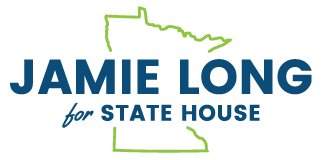Neighborhood groups surprised by NRP reallocation
By Nate Gotlieb from Southwest Journal
The Calhoun Area Residents Action Group got a pleasant surprise this month: Nearly $191,000 in frozen city funding would be coming to the neighborhood over the next four years, leaders learned.
“Folks are very pleased to hear this money is coming back,” said Scott Engel, CARAG’s executive coordinator. “We’ll find a way to use it for sure.”
CARAG residents aren’t alone in that excitement. Sixty-six Minneapolis neighborhoods will be receiving a combined $9.1 million in once promised but now frozen Neighborhood Revitalization Program funds over the next four years, with amounts ranging from $1,000 to nearly $700,000.
About $6.9 million of those funds will be going toward neighborhood housing, Robert Thompson, a policy specialist with the Neighborhood & Community Relations department, said at a City Council committee meeting. Another $425,000 will be going toward economic development, $362,500 to environmental programs, $393,000 to plan coordination and $286,000 to crime and safety.
The funding will complete the city’s commitment to the 26-year-old Neighborhood Revitalization Program, which has given hundreds of millions of dollars to neighborhoods since 1991. As part of NRP, each Minneapolis neighborhood created a two-phased plan to help meet needs ranging from housing and safety to economic development. The city approved the last of the Phase I plans in 2007 and the last of the Phase II plans this month.
The reallocation caught most neighborhood groups by surprise, though many group leaders say they are pleased the money is coming back.
Engel said his group would probably go back to its NRP Phase II plan for guidance. That plan included about $500,000 for housing programs, such as exterior- and garage-improvement programs.
“Folks are somewhat aware of it,” he said of the reallocation, “but it just kind of came very quickly and apparently passed quickly.”
Jamie Long, chair of the Linden Hills Neighborhood Council, said the board was anticipating it was going to have less money coming from the city in the future. It hosted a fall fundraiser for the first time this year, raising close to $10,000.
Long said the Council has an active committee set up to review proposals for where it should be putting its NRP money.
Christie Rock Hantge, neighborhood coordinator and finance coordinator for the Downtown Minneapolis Neighborhood Association, wrote in an email that the DMNA would continue to follow its NRP Phase II plan, adopted by the City Council in February 2011, to guide its spending.
Minneapolis Park Board Commissioner Liz Wielinski, an NRP board member and Columbia Park Neighborhood Association staff member, wrote in an email that the association’s money is currently allocated to be part of its revolving-loan and emergency-loan programs. However, the neighborhood is re-engaging the community, as required by the Neighborhood and Community Relations department for plans more than seven years old.
Ralph Knox, president of the East Calhoun Community Organization, wrote in an email that his association didn’t expect to have the funds returned and will have to evaluate its options.
“Our board will meet to discuss next steps,” he wrote. “Until then, there is not much to report.”
NRP was funded through tax-increment financing, a tool cities can use to spur development. The Minnesota Legislature authorizes cities to designate a TIF district, and cities use the additional tax revenue captured from development in the district to pay for costs related to the development, such as site preparation or parking facilities.
Minneapolis used its TIF district known as the Common Project area to finance NRP. The Legislature required that 52.5 percent of the NRP funds went toward housing and housing-related activities.
The city neighborhoods spent more than $290 million from 1991 to 2011, including $158 million to develop and improve housing using NRP funds. The City Council froze $12.68 million in NRP funds in the 2011 budget, however, in response to rising property taxes.
Some neighborhoods had spent most of their NRP Phase II funding, so the freeze did not impact them. Others lost hundreds of thousands of dollars, including CARAG, Downtown and Kingfield.
The City Council restored about $3.54 million in NRP funds over 2011 and 2012, but $9.14 million remained frozen. It was able to restore the funding this year because of rising property values in a new consolidated TIF district, which includes portions of Downtown, the North Loop, Loring Park and Uptown. The city can use revenue from the district to pay off Target Center bonds and for neighborhood revitalization purposes.
City staff projected the district would generate about $148 million in gross revenue over its 10-year life. That’s increased to $180 million, however, because of increasing property values since the Great Recession.
The City Council will need to amend the consolidated TIF district plan in order to capture the additional $32 million. Staff said that process would take several months.

